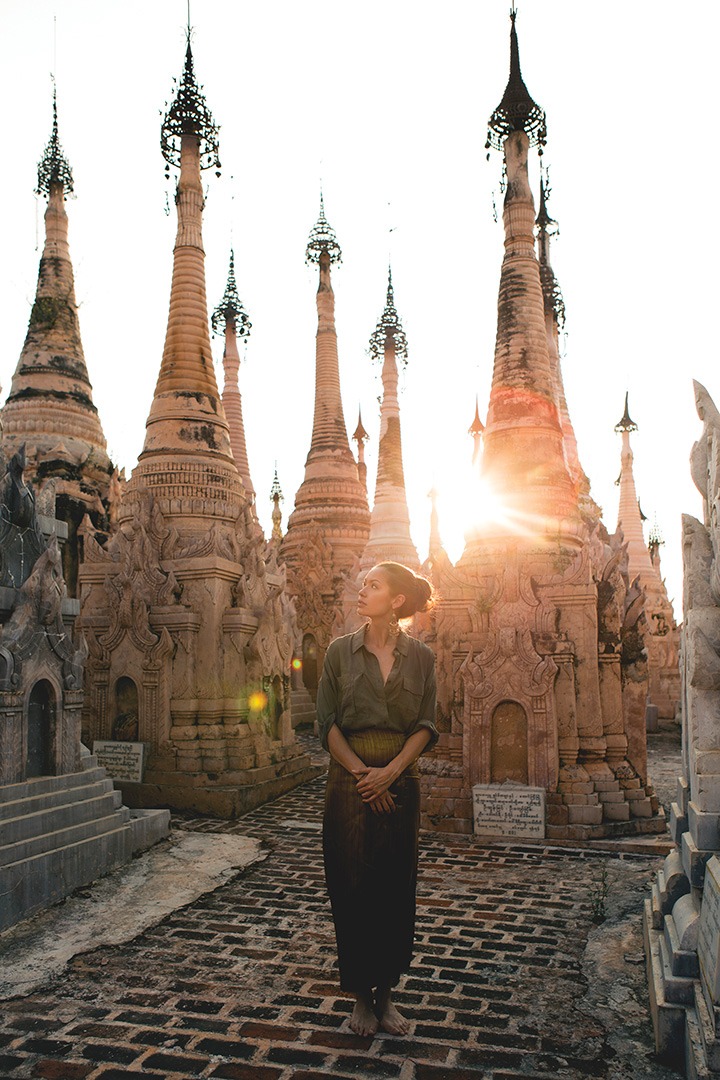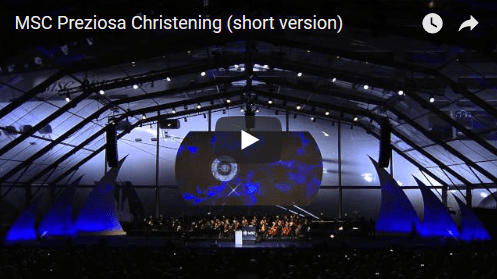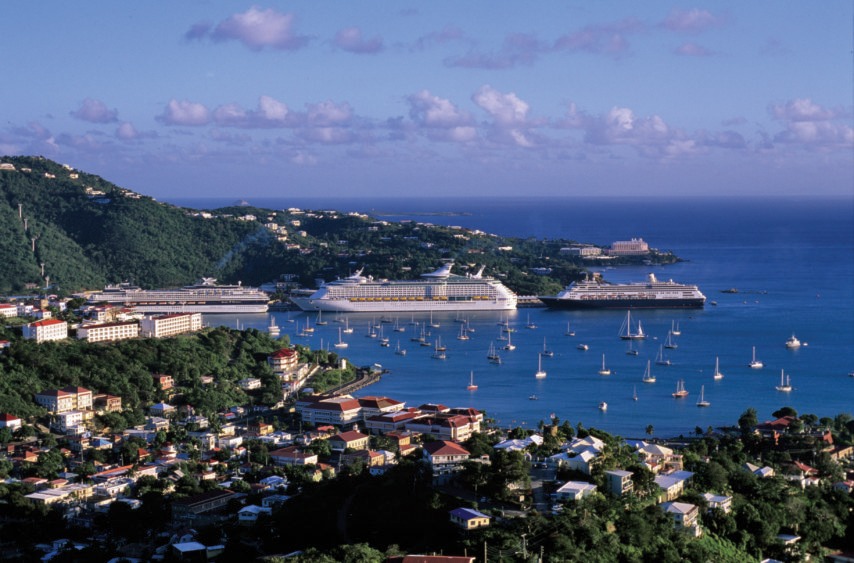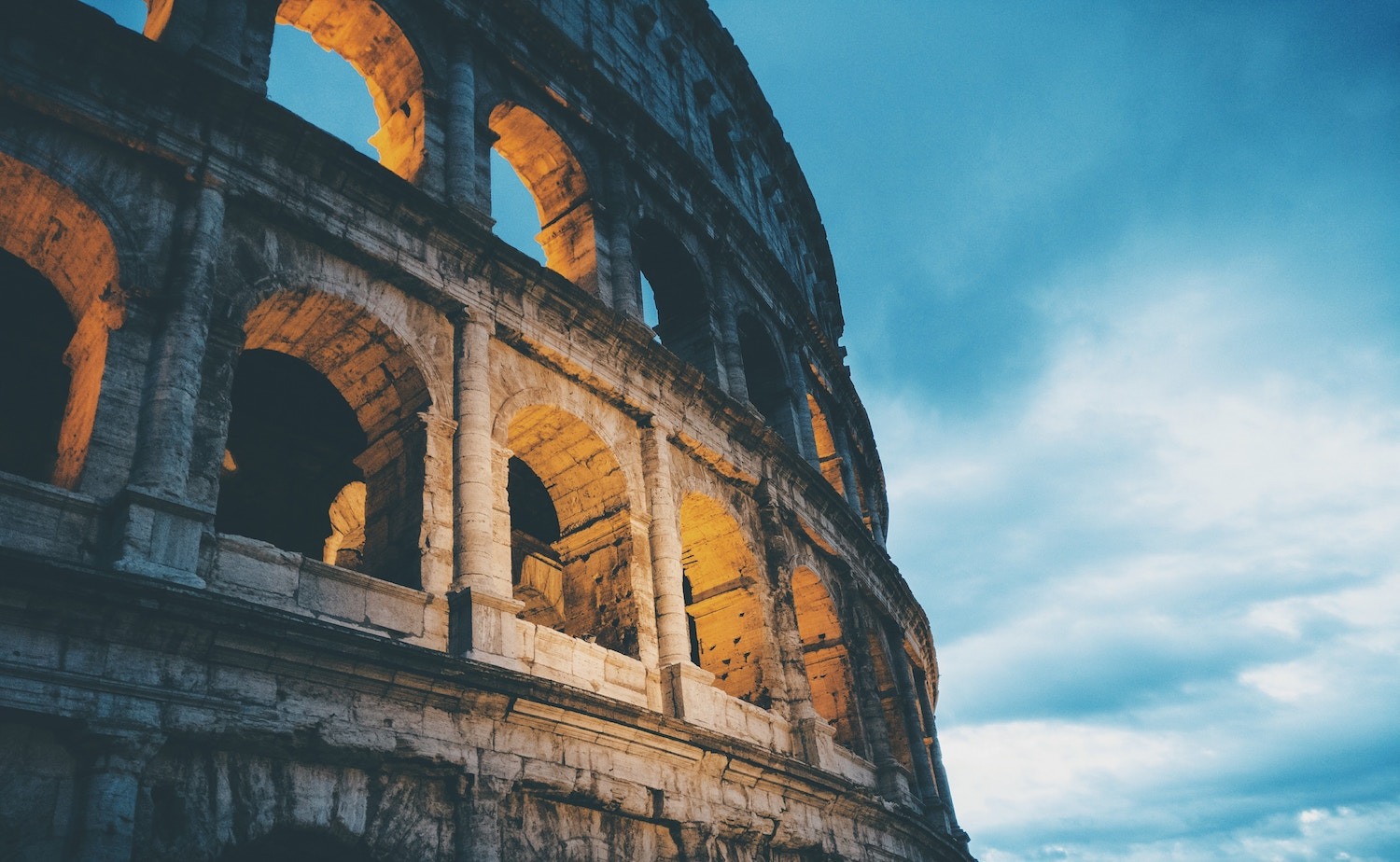
Heading Ashore: 9 Things to See in Rome
For most cruise passengers sailing in the Med, a call at Civitavecchia, Italy, the port of the Eternal City, means that, as the saying goes, “All roads lead to Rome.”
It will necessarily be a long day on those roads – it is about a 45-minute to one-hour’s drive (or longer, depending on traffic) each way between Civitavecchia and Rome – and a busy one with lots to see in the Italian capital, as the city’s attractions are, pardon the pun: “legion.”
Rome: What You Need to See
Here are nine “musts,” the ones that when you return home people will be asking you if you saw:
1) The Trevi Fountain is not only the most famous in Rome, but arguably in the whole world. Located in the heart of the city, it is an 18th century Baroque creation by Nicola Salvi, and the largest fountain in Rome, made of travertine stone with statuary in Carrara marble. The statue of Neptune, god of the ocean, is a focal point – he is dramatically carried in a chariot pulled by two seahorses handled by Tritons. It became world famous from several movies including Federico Fellini’s ‘La Dolce Vita’ (in which Anita Ekberg wades into the fountain) and Jean Negulesco’s ‘Three Coins In The Fountain,’ starring Clifton Webb, Dorothy McGuire, Jean Peters, Louis Jourdan, Rossano Brazzi and Maggie McNamara. This last film, that features a popular song by the same name sung by Frank Sinatra, tells the story of three hopeful secretaries who throw coins in the fountain and make wishes for love and romance. This movie is credited with promoting the cherished tradition of tossing coins into the Trevi Fountain to ensure a return, and now few people leave Rome without doing so. I always faithfully follow the tradition, throwing with my back to the fountain over my left shoulder –like in the movie – just in case!
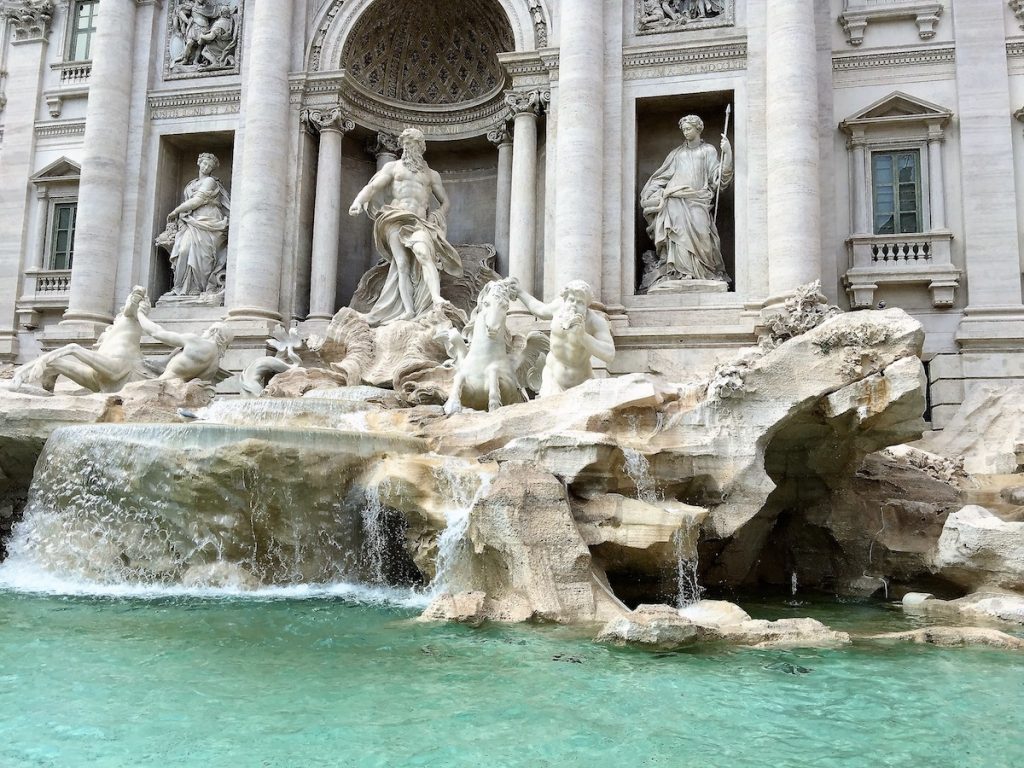
Trevi Fountain | Photo: Georgina Cruz
2) St. Peter’s Square is a huge piazza in front of St. Peter’s Basilica in the Vatican, the papal enclave – a different country – that sits inside Rome (the Vatican makes Rome unique: I mean, what other city do you know that has a country within it?). The plaza, often filled with people who come to listen to the pope’s addresses and receive his blessings, has two dramatic colonnades, four columns deep with a total of 284 columns, designed by Gian Lorenzo Bernini. The colonnades look like the arms of St. Peter’s Basilica as if open in a welcoming embrace. A total of 140 statues of saints stand on top of the colonnades. An ancient Egyptian obelisk was erected in the middle of the square in the 16th century and two granite fountains also adorn the space.
RELATED: Like a Local: When in Rome
3) St. Peter’s Basilica is an Italian Renaissance church begun by Pope Julius II in the 16th century, and one of the holiest sites for the Catholic church as the apostle St. Peter is considered to have been buried here in 64 A.D. Its impressive dome was designed by Michelangelo, who also created one of its many art treasures including the Pieta, a marble sculpture of the Virgin Mary and Jesus – the only piece Michelangelo ever signed.
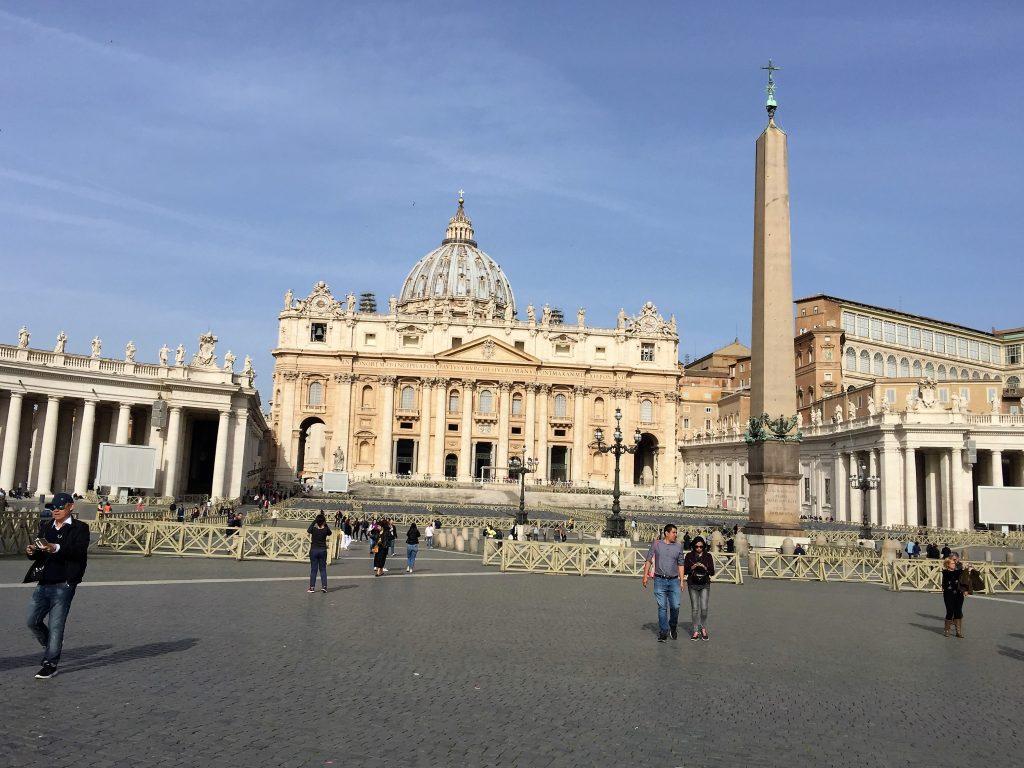
St. Peter’s Square | Photo: Georgina Cruz
4) The Sistine Chapel is the pope’s private chapel and the room where the Catholic Church’s college of cardinals convenes to elect each new pope in conclave. It is home to considerable art treasures including Michelangelo’s ceiling frescoes created from 1508 to 1512 with the famous scene from the Book of Genesis of God creating Adam. Among the other masterworks is “The Last Judgment” also by Michelangelo located behind the chapel’s altar. It depicts Jesus Christ as the central figure judging humanity with the saved ascending to heaven on the left and the damned descending to hell on the right. More than 300 figures are depicted in “The Last Judgment” and Michelangelo put his own face in the flayed skin of St. Bartholomew, a martyr who was flayed alive. Outside the chapel you can see the chimney from where white smoke issues when a new pope has been elected, black smoke if the cardinals have not reached a majority yet.
5) The Colosseum, an iconic oval amphitheater on Piazza del Colosseo in the center of Rome, is a symbol of the Eternal City. Construction of the Colosseum, also known as the Flavian Amphitheater named after the Flavian dynasty of emperors who built it, began in the year 72 under the Emperor Vespasian. It is famous – or probably more accurately, infamous, because of the gladiator games that were held here. Thousands of men and animals died in this arena for the entertainment of the Roman aristocracy and populace. An inside visit is a must to see the interior of the impressive arena that accommodated 50,000 spectators and could be flooded for mock naval battles.
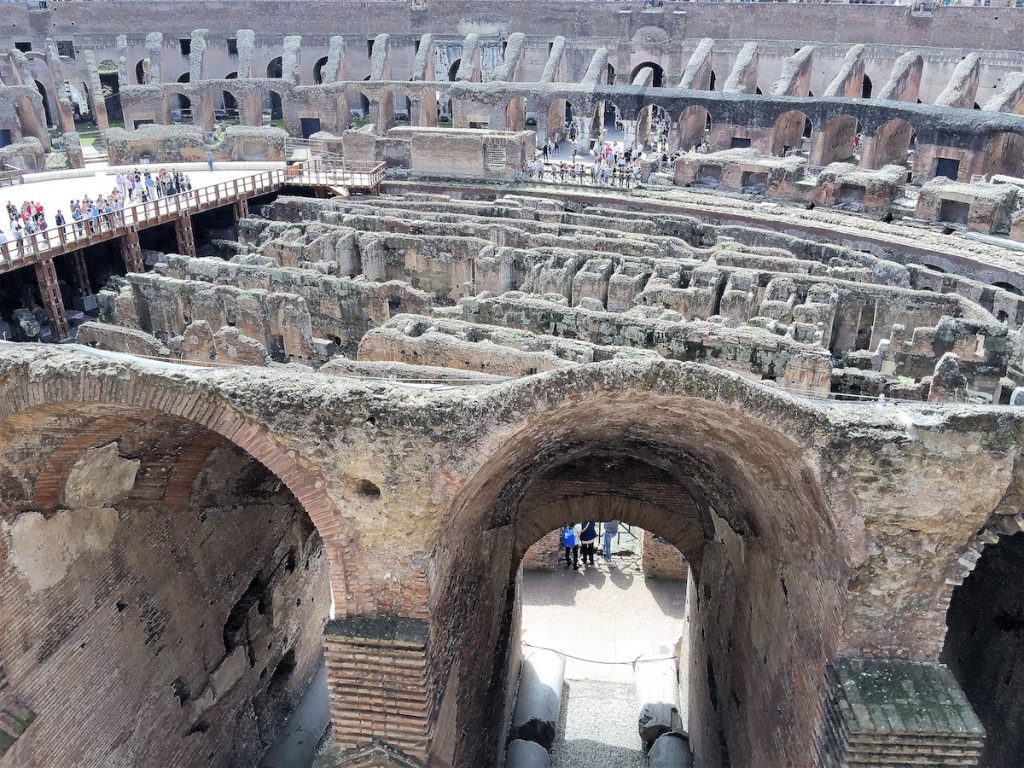
The Colosseum | Photo: Georgina Cruz
6) The Roman Forum, located between the Colosseum and the Piazza Venezia (Via dei Foro Imperiali connects the Forum to the Colosseum), was the center of daily life in ancient times. Temples, government buildings and markets stood around a central square, the Foro, where meetings and other events took place. Their ruins today attract more than four million visitors annually. Highlights include the Arch of Septimius Severus from 203 A.D, with bas-reliefs to commemorate a victory over the Parthians, statues from the House of the Vestal Virgins and Corinthian columns for the Temple of Vespa.
7) The Pantheon on the Piazza della Rotonda dates from the second century and it is the best preserved of ancient Rome’s structures. It is dominated by an “oculus” (circular opening) in its dome. The name Pantheon means “all gods” and it was a temple dedicated to their worship. In modern times it is a Catholic church and the burial place of several members of the Italian royalty as well as the Renaissance painter, Raphael.
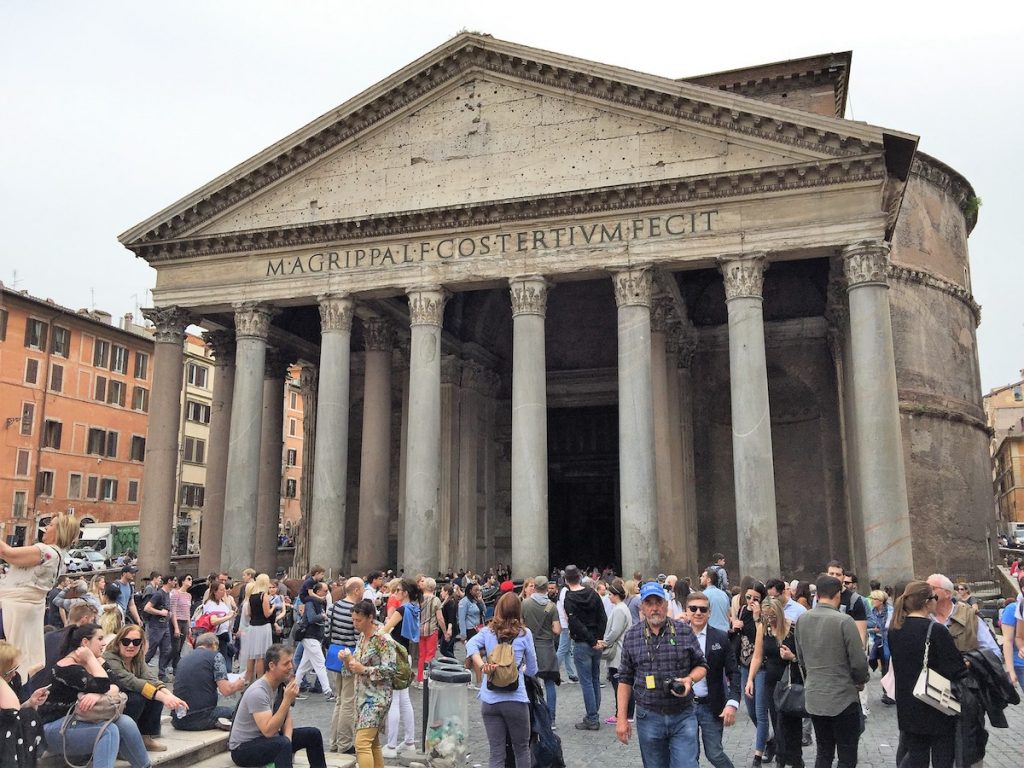
The Pantheon | Photo: Georgina Cruz
8) The Piazza Navona is an elongated square built on the site of the ancient Stadium of Domitian. It has some of Rome’s most beautiful fountains including Gian Lorenzo Bernini’s Fontana dei Quattro Fiumi (Fountain of the Four Rivers), commissioned by Pope Innocent X, and adorned by an obelisk and statues that represent four great rivers: the Nile, the Plate, the Ganges and the Danube. The two other fountains in the square are The Fountain of Neptune and the Fountain of the Moor.
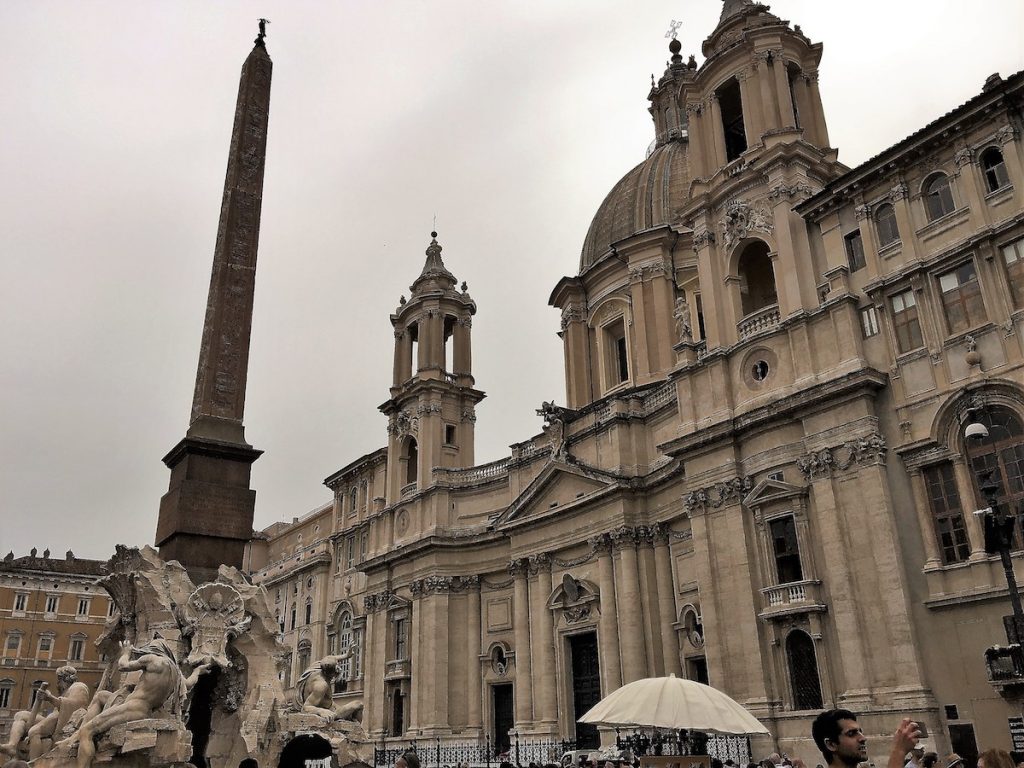
Piazza Navona | Photo: Georgina Cruz
9) The Spanish Steps is the most photographed flights of stairs in Rome and justly so: 137 steps in a garden terrace design rising from the Piazza di Spagna at the bottom, to the Trinita dei Monti church at the top. In spring – typically during May – lovely azaleas adorn the steps. The Keats-Shelley House of the famed British poets is to the right as you face the steps.
By the end of your day in Rome as you make your way back to your ship you are sure to have clicked, clicked away – perhaps more than at any other port – at squares, fountains, monuments, churches and the other eternal sights of Rome!
—Georgina Cruz


